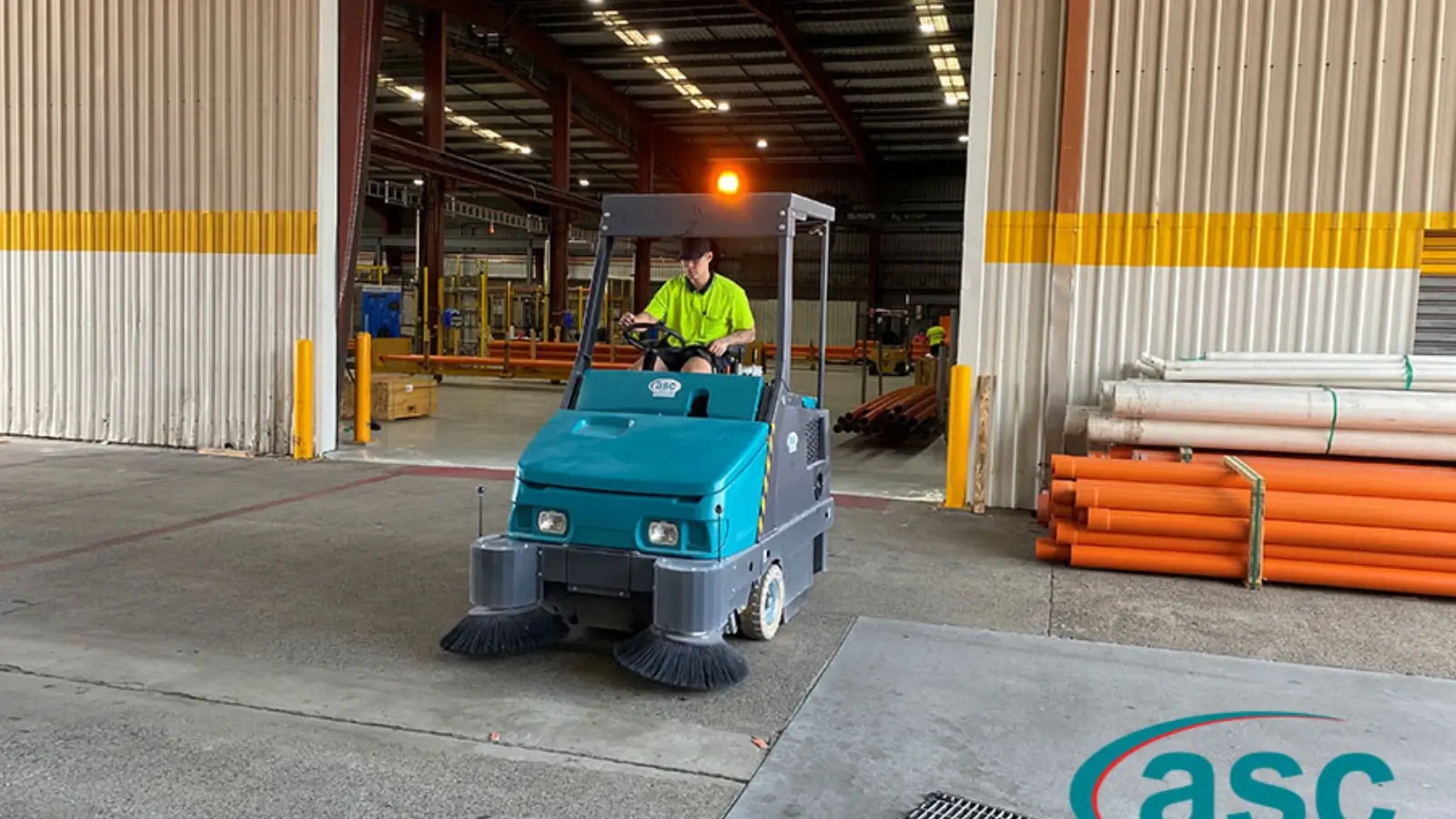


Clean floors help keep work areas safe and productive. For many sites, sweeping by hand takes too long and leaves dust behind. Using a sweeper makes the job faster and more consistent.
The two main options are the ride-on sweeper and the walk-behind sweeper. Both clean well, but each suits a different type of space. The right choice depends on the size of your area, your budget, and how often you clean.
A walk-behind sweeper is a machine that you push or guide from behind. It uses rotating brushes to pick up dust and debris. Some models run manually while others have powered wheels or vacuum systems.
Walk-behind sweepers are ideal for smaller commercial and industrial spaces. They fit easily around equipment and narrow aisles. You can store them in tight spots and move them without special training.
Here are some advantages of using a walk-behind sweeper:
However, it also has some limitations, like:
If you manage a small workshop, retail store, or compact warehouse, a walk-behind sweeper is often enough. It keeps floors clean without taking up space or adding high fuel costs. You can also use it for touch-up cleaning between major sweeps.
A ride-on sweeper looks and works more like a small vehicle. The operator sits on top and drives it across the floor. It has wide brushes and a large debris hopper, which means it can clean big areas fast.
Ride-on sweepers are designed for larger sites where manual sweeping would take too long. They save time and reduce physical strain. Because the operator rides rather than walks, they can cover more ground in one shift.
Here are some reasons why commercial space owners use ride on sweepers:
Common limits include:
Choosing between a ride-on and a walk-behind sweeper is about finding the right fit for your site. Look at the following factors before you decide.
A walk-behind model suits spaces under 1,000 square metres. If you clean more than that, a ride-on sweeper will handle the job faster.
If you sweep once or twice a week, a walk-behind might be enough. If cleaning happens daily or across multiple shifts, a ride-on will save time and labour.
Fine dust, metal shavings, and sand need strong suction or sweeping power. Ride-on sweepers usually have more power and larger hoppers. Walk-behind models are fine for light dust or small debris on smooth floors.
A ride-on sweeper reduces physical effort and lets staff stay comfortable during long runs. This matters if cleaning is a daily job.
Walk-behind units cost less up front. They also use less power and are cheaper to service. Ride-on models cost more but can lower your labour costs over time. Consider the total cost over several years, not just the first purchase.
Productivity is one of the biggest differences between the two types. A walk-behind sweeper might clean around 2,000 square metres per hour. A ride-on sweeper can cover three to five times that area in the same time.
This means fewer passes, less labour, and more consistent cleaning results. Over a year, that time savings adds up. Even if a ride-on costs more to buy, it often pays for itself in reduced labour costs.
Maintenance is another point to think about. Ride-on sweepers have more parts, but they are built for heavy use. Regular checks keep them reliable. Walk-behind sweepers are simpler, which means less to repair but also less power for big jobs.
When you factor in operator wages, downtime, and cleaning frequency, a ride-on sweeper often becomes the better long-term investment for larger sites. Smaller sites still benefit from walk-behind units that cost less to run and store.
Make sure your team understands how to start, stop, and empty the machine. Keep brushes and filters clean to avoid clogging. Replace worn parts before they fail.
Ride-on sweepers may need more attention because they include engines or batteries, steering systems, and seats. Regular maintenance checks lower breakdown risk and keep cleaning performance steady.
For walk-behind sweepers, check the brushes often and clean out the hopper after each use. Train your operators to handle the machine at a steady pace and avoid sharp turns.
|
Factor |
Walk-Behind Sweeper |
Ride-On Sweeper |
|
Productivity |
Cleans up to 2,000 m² per hour. Best for small to medium areas. |
Cleans 6,000–10,000 m² per hour. Ideal for large sites. |
|
Total Cost of Ownership |
Lower upfront cost and easy maintenance. Higher labour costs over time. |
Higher purchase price but lower labour cost and faster payback on large sites. |
|
Safety |
Simple to use. Minimal risk if used correctly. |
Requires basic operator training. Safe when operated responsibly. |
|
Training |
Quick to learn. Suitable for all staff levels. |
Takes longer to train, but it is easy once learned. |
|
Upkeep |
Simple maintenance. Fewer moving parts. |
More complex system. Needs regular checks and servicing. |
Both sweepers have clear strengths. A walk-behind sweeper gives you flexibility, easy handling, and low running costs. It’s best for small and medium areas where space is tight. A ride-on sweeper delivers faster results and suits large industrial floors where time and efficiency matter.
Whichever model you choose, keep your floors clean and safe. The right machine makes daily cleaning easier and more reliable. Investing in a quality ride on sweeper helps you maintain your site with confidence.